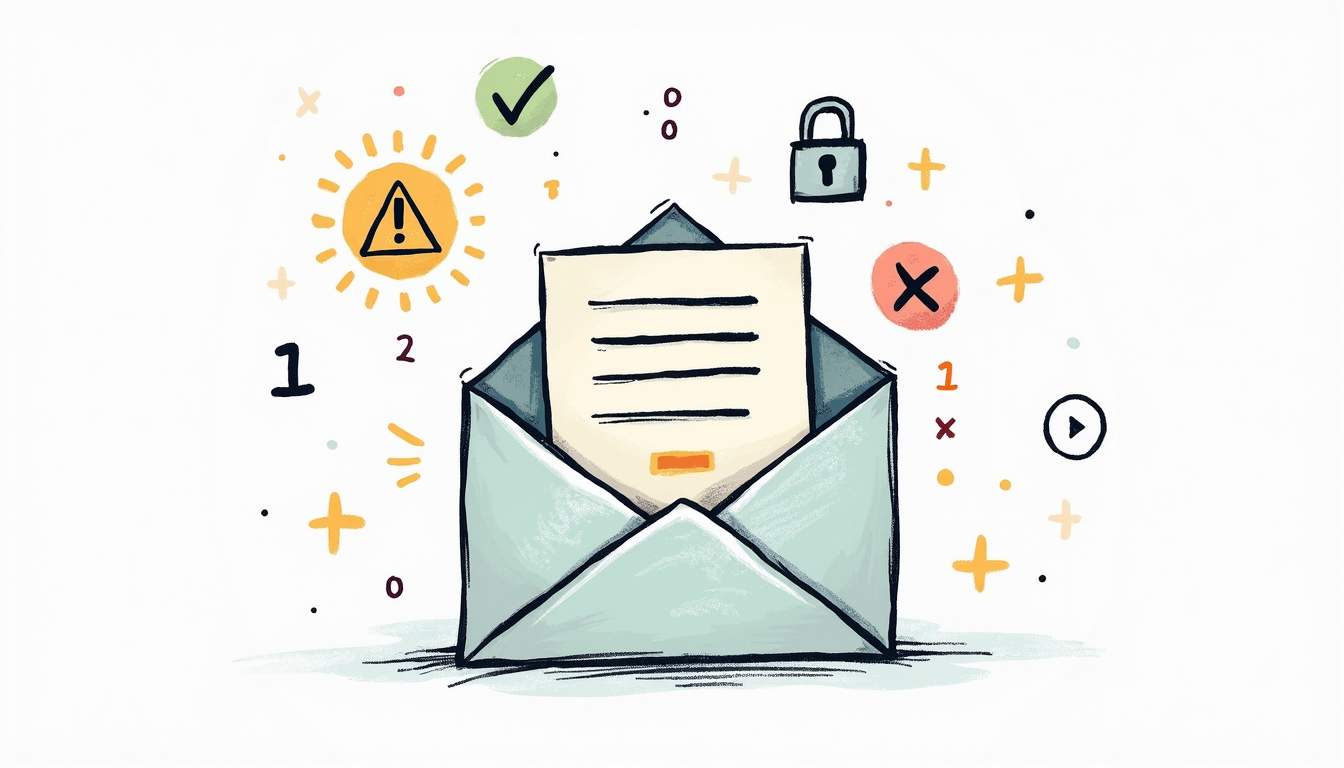Email verification is a crucial process in the realm of digital communications, ensuring that messages are sent to valid addresses. This article delves into the intricacies of email verification, outlining its significance, methods, benefits, and challenges.
Introduction to Email Verification
Email verification is the act of checking if an email address is valid and capable of receiving messages. This process prevents the common pitfalls of sending emails to non-existent addresses, which can significantly damage the reputation of a sender’s domain.

In a world where digital communication is ever-increasing, understanding the nuances of how email verification works is essential for businesses and individuals alike. It not only affects deliverability but also impacts marketing effectiveness. With the rise of spam and phishing attacks, ensuring that your email list is composed of legitimate addresses has become a critical component of any successful email marketing strategy. By investing in email verification, businesses can safeguard their communications and foster trust with their audience.
What is Email Verification?
Email verification refers to the process of ensuring that an email address belongs to a real user and that it can receive messages. The process typically involves validating the syntax, checking domain existence, and even pinging the mail server to verify the address.
This can be done manually or through automated systems, and it plays a vital role in maintaining a clean and effective mailing list. By ensuring that only valid addresses are included, email verification helps avoid issues during the sending process. Additionally, many email verification tools offer features such as real-time verification, which checks email addresses as they are entered into forms, thereby preventing invalid entries from ever making it onto your list. This proactive approach not only streamlines the email collection process but also enhances user experience by reducing the likelihood of errors.
Importance of Email Verification
The importance of email verification cannot be overstated. Firstly, it helps businesses maintain a good sender reputation. Email providers, like Gmail and Yahoo, monitor sender behavior and can penalize those who frequently send messages to invalid addresses.
Moreover, email verification directly impacts conversion rates. A clean email list filled with valid addresses increases engagement since messages are reaching the intended recipients. This, in turn, leads to higher open rates and improved overall marketing performance. Furthermore, the financial implications of maintaining an unverified email list can be significant. Sending emails to invalid addresses not only wastes resources but can also lead to increased costs associated with email marketing services that charge based on the number of emails sent. Therefore, investing in email verification not only enhances deliverability and engagement but also serves as a cost-effective strategy for maximizing marketing ROI.
Methods of Email Verification
There are several methods for verifying email addresses, each serving different needs. These methods cater to both single email validation and bulk email verification, making the process adaptable to various scenarios.
Single Email Verification
Single email verification is ideal for individuals or small businesses that need to check the validity of an email one at a time. This method involves using a verification tool that can analyze each email address entered and provide instant feedback on its validity.
Typically, this verification process includes checking the format of the email, confirming that the domain exists, and assessing whether the server responds to verification requests. This straightforward approach ensures that users can verify potential leads or contacts without overwhelming their systems. Additionally, many single email verification tools offer features such as real-time validation, which allows users to receive immediate results as they input email addresses. This can be particularly beneficial for customer service representatives or sales teams who need to ensure they are reaching out to valid contacts.
Bulk Email Verification
Conversely, bulk email verification is designed for larger organizations or marketing campaigns where numerous email addresses need validation simultaneously. This method often involves uploading a list of email addresses to a verification platform, which then processes the data and returns results for each address.
Bulk email verification is efficient and saves time. It also helps in maintaining data integrity in large databases, enabling organizations to clean their lists and enhance future campaigns. By implementing this method, businesses can ensure their marketing strategies are not hampered by invalid emails. Furthermore, many bulk verification services provide additional insights, such as identifying temporary or disposable email addresses, which can help marketers refine their targeting strategies. This added layer of analysis not only improves the quality of the email list but also enhances overall campaign effectiveness by ensuring that communications are sent to engaged and legitimate recipients.
Understanding Email Validation Statuses
When an email address has been verified, it typically returns a status that indicates its validity. Understanding these validation statuses is crucial for users to ascertain the reliability of their email lists.

Common statuses include ‘valid’, ‘invalid’, ‘unknown’, and ‘disposable’. Each status has its importance in deciding whether to keep, remove, or further investigate the addresses in question. Marketers should familiarize themselves with these statuses to effectively manage their emailing strategies.
For instance, a ‘valid’ status signifies that the email address is correctly formatted and exists on the mail server, making it a reliable target for outreach efforts. Conversely, an ‘invalid’ status means that the email address either does not exist or is incorrectly formatted, which can lead to bounce rates that negatively impact sender reputation. Understanding these nuances allows marketers to clean their lists and focus on engaging with genuine leads, ultimately improving their campaign performance.
In addition to these, the ‘unknown’ status can indicate that the validation system could not definitively determine the status of the email address, often due to temporary server issues or privacy settings. This uncertainty can prompt further investigation, such as attempting to reach out through alternative channels. Lastly, ‘disposable’ email addresses are often created for short-term use, which can skew analytics if not properly filtered out. Recognizing these various statuses empowers marketers to refine their strategies, ensuring that their communications are not only reaching the right audience but also maximizing their return on investment.
Benefits of Email Verification
The benefits of employing email verification are substantial and can lead to a more streamlined and effective communication strategy. By taking steps to verify email addresses, businesses can achieve various improvements.

Improved Deliverability Rates
One of the most immediate benefits of email verification is improved deliverability rates. By ensuring that emails reach valid addresses, companies can minimize bounce rates, which are a significant factor affecting sender reputation.
With higher deliverability, campaigns are more successful in reaching target audiences, thus enhancing overall business communication. This leads to a higher likelihood of achieving marketing objectives and improved customer relationships. Furthermore, maintaining a good sender reputation is crucial in today’s competitive landscape, as it not only affects deliverability but also influences how email service providers view future communications. A positive reputation can result in better inbox placement, ensuring that messages land in the primary inbox rather than the spam folder.
Enhanced Data Quality
In addition to improving deliverability, email verification contributes to enhanced data quality. A clean email list is invaluable for decision-making processes in organizations. By removing invalid or outdated addresses, companies can focus their efforts on engaging real and interested customers.
This quality of data supports better targeting in marketing campaigns, ultimately resulting in higher return on investment (ROI). Organizations can refine their messaging and adaptation strategies based on accurate data. Moreover, enhanced data quality can lead to improved customer segmentation, allowing businesses to tailor their approaches based on specific demographics or behaviors. This level of personalization not only increases engagement rates but also fosters customer loyalty, as individuals feel more valued when they receive content that resonates with their interests and needs. The interplay between data quality and customer satisfaction is a powerful driver of long-term business success.
Challenges in Email Verification
Despite the numerous benefits, there are challenges in the email verification process that users must consider. These challenges can impact the effectiveness of verification efforts and, consequently, the overall email strategy.
Verifying catch-all emails through tools like EmailAddress.ai
One of the bigger hurdles in email verification is the presence of catch-all email addresses. These addresses are set up by domain owners to accept all emails sent to that domain, regardless of the specific mailbox. While they may seem valid, catch-all addresses can lead to complications.
For example, using tools such as EmailAddress.ai can assist in identifying whether an email is a catch-all or truly valid. However, it requires skill and understanding to interpret the results correctly, potentially leading to misclassification if not done carefully.
Maintaining Privacy and Compliance
Another significant challenge is maintaining privacy and compliance while verifying email addresses. Regulations like GDPR impose strict rules on how personal data is handled, including email addresses. Organizations must ensure they comply with these regulations when collecting and verifying email addresses.
Failure to do so can result in legal actions and penalties. Therefore, it is crucial to understand the legal landscape surrounding email verification to navigate these waters effectively while preserving the trust of customers.
In conclusion, email verification plays a pivotal role in maintaining effective digital communications. By understanding its methods, benefits, and the challenges involved, organizations can better utilize this process to enhance their marketing strategies and relationships with customers.
Take Your Email Strategy to the Next Level with EmailAddress.ai
Ready to elevate your email verification process and ensure your campaigns achieve maximum deliverability? Look no further than EmailAddress.ai, the ultimate tool for businesses and individuals determined to minimize bounces and maintain impeccable sender reputations. With real-time verification and a 98% accuracy guarantee, our platform not only confirms the validity of your email addresses but also enriches them with valuable intelligence, including associated social profiles. Don’t let catch-all emails undermine your efforts. Sign up for free at EmailAddress.ai and experience the difference precise email verification can make.

